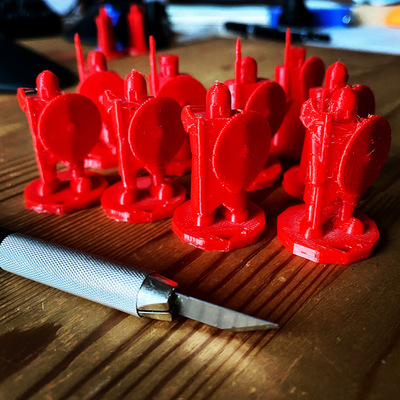
|
Hex Stair Crawling |
| 2021-04-20 |
Hex Stair Crawling

The next game session will host one more experiment, 3d printed hex maps. The picture above isn't about the Giant's Causeway, it's an island off Norway.
I've been building tools to generate hexmaps for given places on Earth for a few months and putting them to use in my session preparation and during the session itself. The map granularity is the 100m hexagon, this makes for a rough translation, but the result is good enough to be played with.
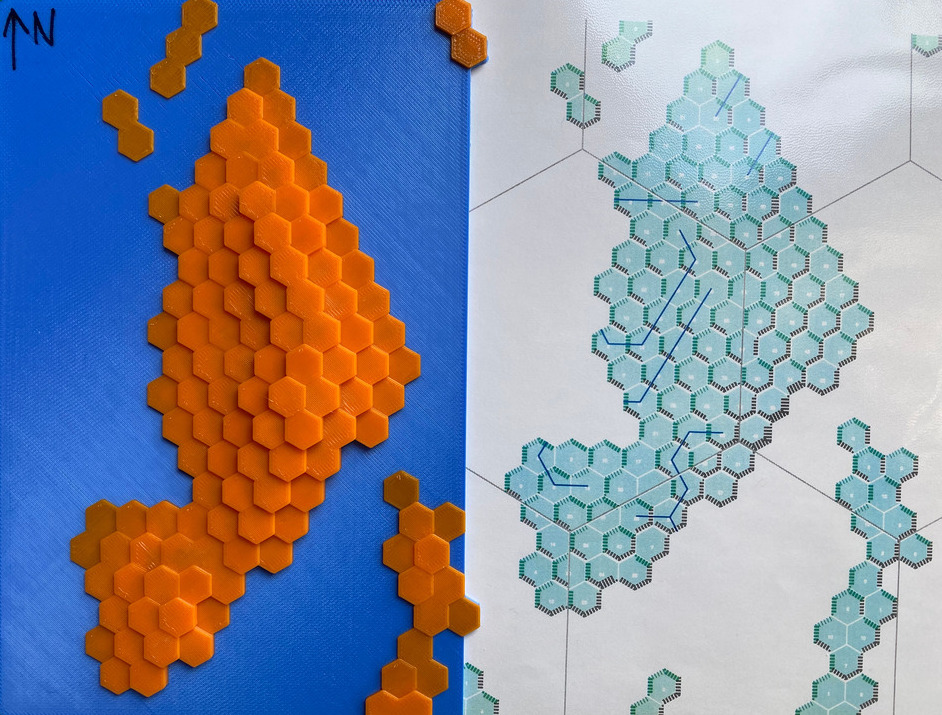
For session preparation those maps are obviously useful. What does this place look like? Are there rivers crossing it? what's the approximate vegetation cover?
During the session itself, I once placed a map on the table, I introduced it by saying that the old chief drew its semblance in the cinder of the central fireplace, the focus wasn't on the map, it was on the mission that was to take place on the canvas delineated by those lines and intersections.
The action of our current sessions is taking place on small islands with clear line of sight. I am going to share with the players 3d printed models of some of the islands.
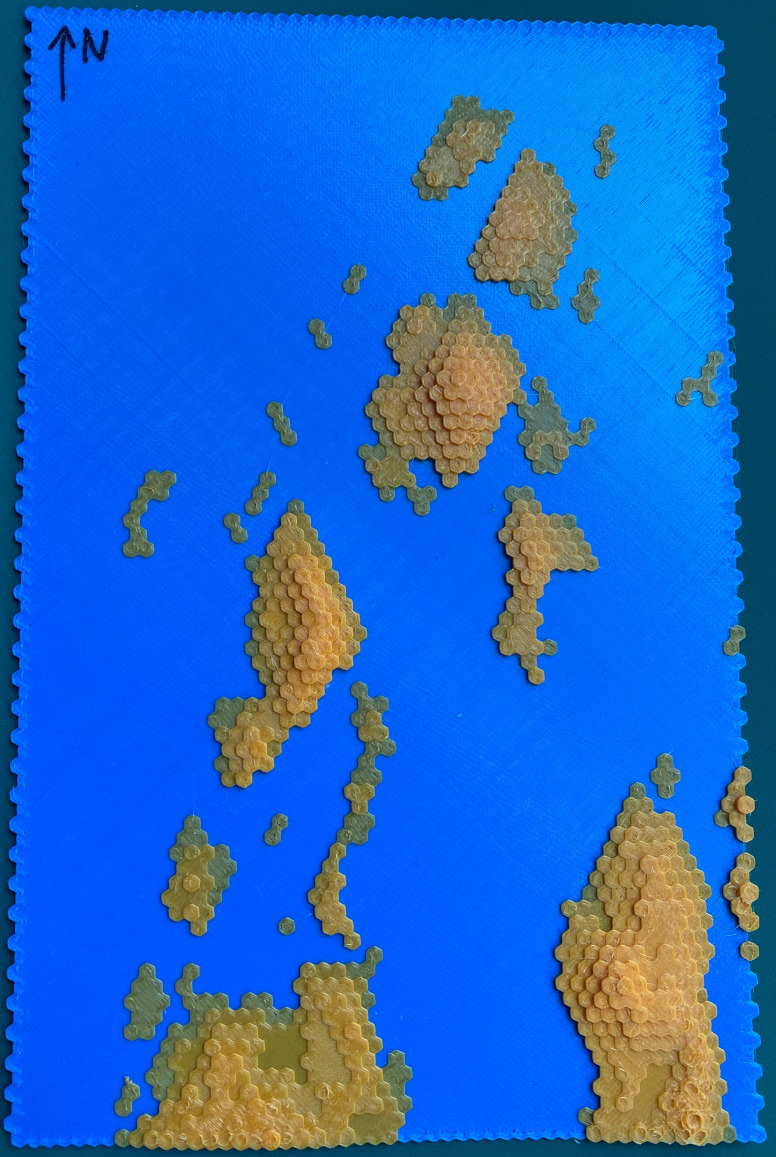
I am not very happy with the way I render slope in my current maps. The first time I showed such a map to the players, there was no feedback on that, I am not sure if the sense of the slope was carried correctly to them.
My idea for the next session is to drop a 3d print on the table, "Voilà, you are on this island, on this point". I'll tell them that an hex is 100m wide, so it fits two olympic pools, or that a soccer field is 125 meters long. Walking through ten of them takes approximately fifteen minutes.
Those hex stairs give an immediate "feel" for the slope of the terrain. I hope there is no need to translate elevation, it should be immediately graspable.
In my days wearing green, we made the distinction between a "decision in the field" and a "decision on the map", we always tried to confirm a "decision on the map" by doing reconnaissance, obtaining a "decision in the field" finally. But one does not always has the opportunity to reconnoiter (time, transportation, opposition, ...)
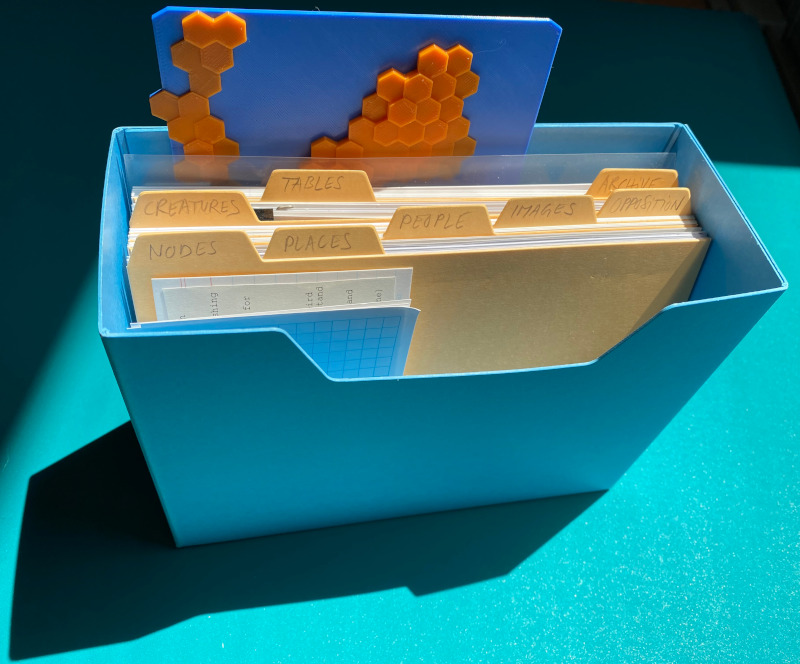
That field vs map delta may bite here too. You look at the map (or the 3d model) and decide that farmsteads should be placed on the east side of the island. You then look at the satellite view and notice that, in our time, the farms are on the west side. The elevation and the orientation doesn't tell the whole story.
Speaking of islands, it's also important to look at where the boats are stationed on the island. The satellite photo is also interesting when you look at the white of the waves crashing, what side of the island?
The "decision on the map" vs "decision in the field" delta might also play against the adventuring party. When the old chief drew the map (and I produced the map on the table), the chief suggested an itinerary, the players trusted him, but they could have become fixated on the map and have chosen a different route.
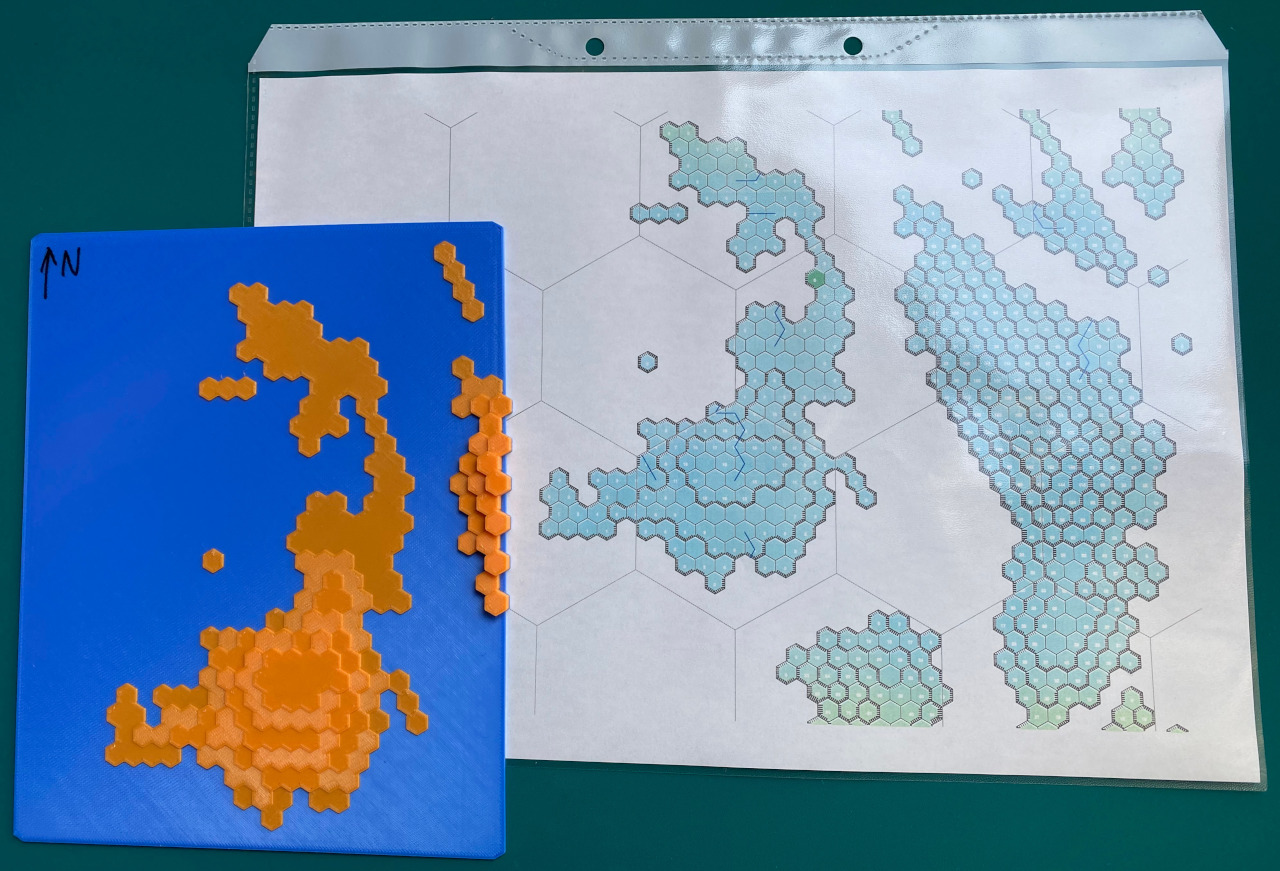
When communications isn't instantaneous, any decision about a remote place becomes a "decision on a model". One has to be prepared for some forced "decision in the field" once the field is reached.
We are playing in the dark ages between the British Isles and Scandinavia. Common folk had never seen a map, probably they could not immediately "map" the territory from its representation. People were probably more used to verbal instructions, go there, turn right, walk for three days. One could not really give the whole model in one go to others, travel instructions were issued (and remembered) and the recipients were trusted to build their own mental model, their own map.
Digression: Marshall Islands stick charts
After trying to print as big as my Prusa printer build plate allows, I went with printing maps that fit the B6 format (25 x 176mm) so that the maps can be placed in my index card box. That makes for thick cards, but it's very convenient (anyway one shouldn't have too many cards in their box).
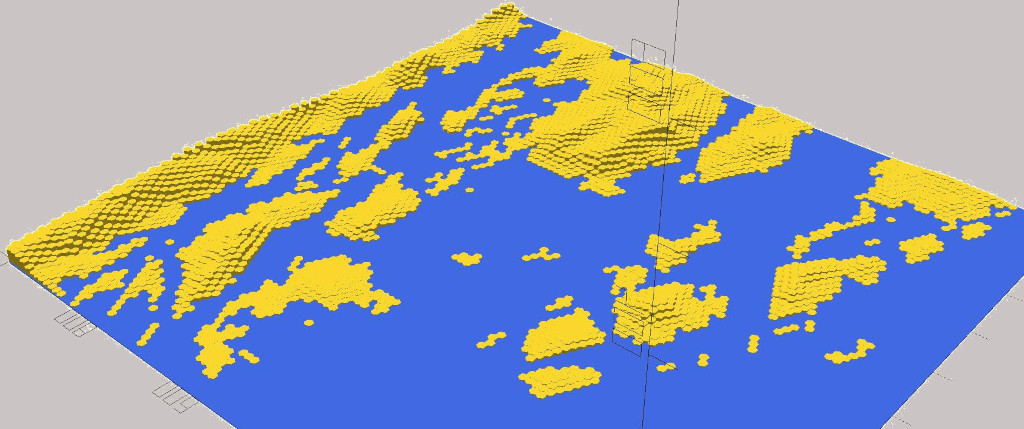
Trying to print as big as the build plate allows is rewarding, but it may favour "warping", the thick base plate may warp at a corner and it will ruin the print quality there (see bigger scale's southeast corner for an example).
Since my program is generating OpenSCAD files, the 3d viewer may be used to have a "look" at the map without even printing it to plastic. I have a printout of the "view" on the right and I will try to give it to the players to give them a bigger perspective.
